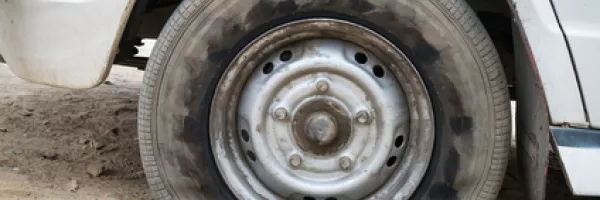
Good tires are the foundation of safe driving. If that sounds hyperbolic, it's not. Tires with weak tread are more likely to skid due to the lack of traction, and if you can't reliably steer your car with any degree of precision, then it doesn't really matter what sort of condition the rest of the car is in. Tires worn thin can blow out in the middle of traffic and, if that happens, then clean oil and new spark plugs can't do much to prevent an accident.
If you want to drive safely, then two things are of the utmost importance. You need to learn how to detect when tires are wearing thin and extend the life of your tires.
Luckily, taking care of your tires is one of the easier tasks involved in keeping your car in shape. Follow these points for a safer driving experience:
Learn to Read the Wear
Inspect the treads of your tires regularly to assess their condition. Pay attention to any uneven wear patterns, as this may indicate issues with tire inflation or alignment. Familiarizing yourself with different types of tire wear can help you identify bad habits when it comes to inflating and caring for your tires. You can even spot other issues with your car, such as worn suspension parts identified by cupped wear on the tire itself.
Check Your Pressure Regularly
Check your tire pressure about once a month. Adjusting is easy enough: let air out when it's over-inflated, and pump some more when it's low. The NHTSA (National Highway Traffic Safety Administration) points to under-inflation as a leading cause of car accidents. Make sure to check the pressure right after inflation. Don't let improper inflation let the air out of your new Continental tires.
Don't Neglect Tire Rotation
If you don't have your driver's manual to tell you how often to have your tires rotated, start with once every 6,000 miles. This will let your tires wear evenly to ensure you don't have four tires at four different points in their life cycle. An even tread means better traction and a lower risk of accidents.
Know Your Maximum Weight Load
Tires are only designed to support up to a certain weight. You don't want to use your compact car to transport tons of steel and cement, obviously, but the weight recommendations are especially important for trucks and SUVs. You'll find the recommended load listed on the same part of the sidewall where you'll find the recommended tire pressure.
Replace Your Tires When You See the Bars
Most tires feature built-in wear indicator bars that are exposed when the tires have been worn down past a certain point. When this happens, your next trip should be to the garage in order to replace them. Every trip you take on worn tires is another chance to experience a blowout.
Caring for your tires doesn't really take all that much time and effort — just a quick pressure check once a month and regular maintenance, and you shouldn't have to worry about your tires any more than you do your oil filter, coolant levels, or any other aspect of car maintenance.